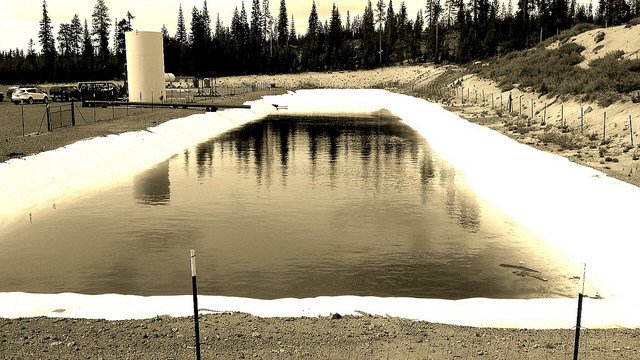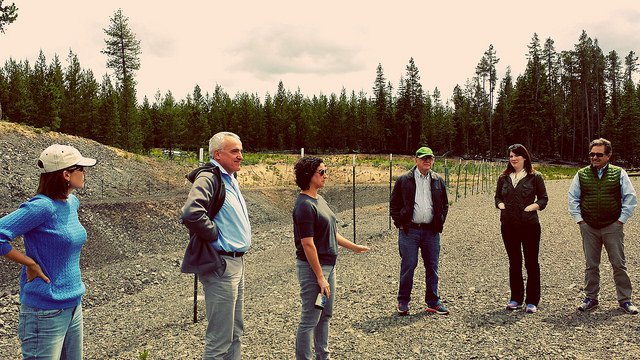Tapping Into Geothermal Energy
Touring the Newberry Geothermal Energy research facility
- June 21, 2016
- Carol Winkel

Geology, the saying goes, is destiny. Just as the Pacific Northwest's volcanic past made it possible to build dams into its basaltic landscape, it also holds potential to develop geothermal energy from the Earth's heat. The region is part of The Ring of Fire, an area of volcanoes and seismic activity, with hot spots deep within the Earth’s mantle.
Council members and staff toured the Newberry Geothermal Energy research facility in June, which is in the running to become the Department of Energy's dedicated national research facility to develop and test new enhanced geothermal system technologies. The Council's Seventh Power Plan identified conventional geothermal energy as a potential renewable resource to help Northwest states comply with their renewable energy goals, and enhanced geothermal was identified as a promising emerging technology to track. Unlike wind and solar, geothermal is a baseload, or consistent in meeting demand, renewable--a significant advantage. Although the costs and exploratory risk of conventional geothermal have hindered its development, the region's potential is significant, especially in Central and Southern Oregon and Idaho.

Conventional geothermal requires drilling to find hot rock and water. Without both, which is often the case, the site isn't usable. With enhanced geothermal, water or another medium can be supplied, reducing the financial risk of drilling a dry well. The research project is at the Newberry Volcano in Central Oregon where hot rock is closer to the surface, making it easier to drill wells and carry out enhanced geothermal system research. The process involves pumping water into hot underground rock to produce steam and hot water that can then be used to generate electricity at an on site power plant. The water can be reused in a closed-loop cycle.
While concerns about fracturing deep, embedded rock (fracking) to extract natural gas have been in the news, project researchers have worked with local, state, and federal regulators to develop monitoring plans to ensure that their work is safe for the environment.
The project is a public-private consortium between public agencies, universities, and private companies. Leads include the Pacific Northwest National Laboratory, Oregon State University, AltaRock Energy, GE Global Research, and Statoil.
For more on the project:
Bend Bulletin - Newberry still in running for geothermal lab
KTVZ News Channel 21 Central Oregon



